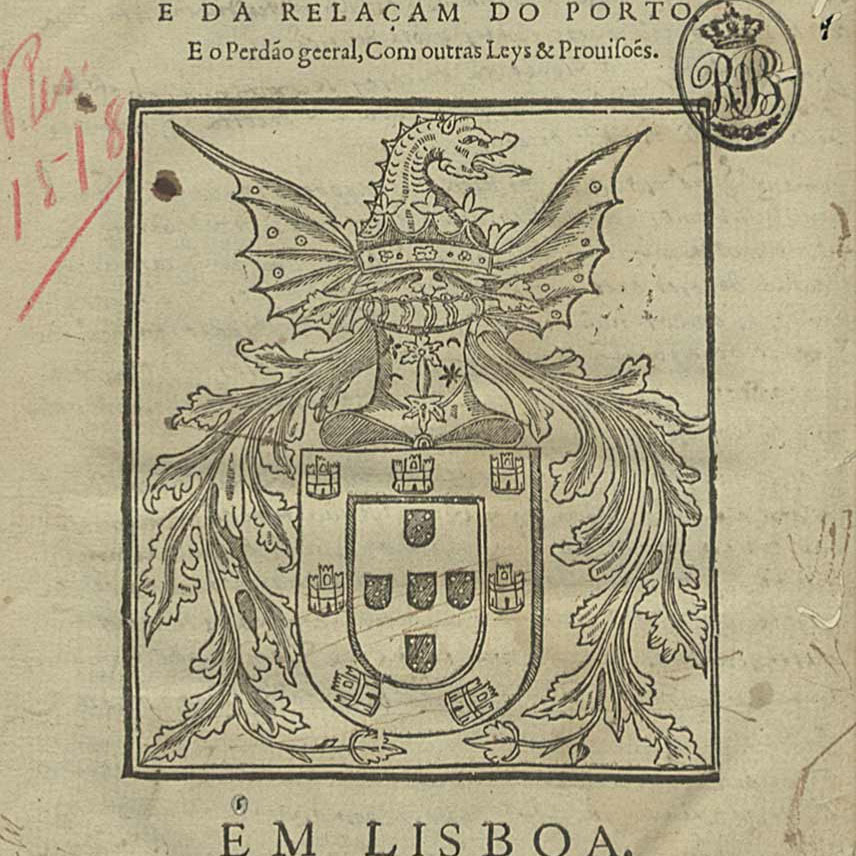Chronological span
Court created in 1582, following the abolition of the Casa do Cível (see heading Casa do Cível, subheading “Chronological span”).
As part of the liberal reforms of the kingdom’s administration, Mouzinho de Silveira called for its abolition in 18321Ed. Colecção de Decretos, 1st series, 1834, p. 90-138, specifically p. 133-134., which was put into effect by a decree of the following year2With the appointment of its judges on 30 July 1833, ed. Chronica Constitucional de Lisboa, 1833, nº 7, p. 25., through a process similar to that of the Casa da Suplicação (see heading Casa da Suplicação, subheading “Chronological span”).
Normative documents (main)
- Regimento of 15823Ed. Regimento da Casa da Suplicaçam, 1583..
- Ordenações Filipinas (c. 1604), which incorporate the regimento of 1582 and update the articles referring to the former organisation of the Casa do Cível4OF, bk. 1, tit. 35 (Governador); tit. 36 (Chanceler); tit. 37 (Desembargadores dos Agravos e Apelações); tit. 38 (Corregedor dos Feitos Crimes); tit. 39 (Corregedor dos Feitos Cíveis); tit. 40 (Juiz dos Feitos da Coroa); tit. 41 (Ouvidores do Crime); tit. 42 (Juiz da Chancelaria); tit. 43 (Promotor de Justiça); tit. 44 (Escrivão da Chancelaria); tit. 45 (Solicitador da Justiça); tit. 46 (Escrivães diante os Desembargadores) e tit. 47 (Escrivão das fianças dos degredados). (see heading Casa do Cível, subheading “Normative documents (main)”).
Competences
The Casa da Relação do Porto heard appeals, grievances, and testimonial letters in civil and criminal cases from the judges of the districts of Trás-os-Montes, Entre-Douro-e-Minho, and Beira (with the exception of the district court—correição—of the town of Castela Branco) and the district courts of the city of Coimbra and the town of Esgueira7Ed. Regimento da Casa da Suplicaçam, 1583, prologue; OF, bk. 1, tit. 37, prologue-§1; Hespanha, 2015, §231..
The Ordenações Filipinas specify that this court was also granted authority to deal with cases from the city of Porto and the five leagues around it, which came to it by writ of review8OF, bk. 1, tit. 37, §3..
Institutional organisation and the roles of its agents with regard to entails
Institutional organisation
The Casa da Relação do Porto had the same structure as the former Casa do Cível (cf. Casa do Cível, subheading “Institutional organisation and the roles of its agents”).
The roles of its agents
With the transfer to the Casa da Suplicação of the competences of the former Casa do Cível in terms of appeals against the decisions of the Provedores dos Resíduos e Capela of Lisbon and of the Court of the Misericórdias and the Hospital de Todos os Santos (see Casa do Cível, subheading “Competences—Entails”), the Casa da Relação do Porto did not inherit from its predecessor any specific prerogative with regard to entails.
Relations with other institutions with regard to entails
The Ordenações Filipinas established the jurisdiction of the desembargadores of the Casa da Relação do Porto in cases involving movable assets worth one hundred thousand réis and immovable property of up to eighty thousand réis, given that above these amounts the cases could be appealed to the Casa da Suplicação (see heading Casa da Suplicação, subheading “Relations with other institutions with regard to entails”)9OF, bk. 1, tit. 37, §2..
